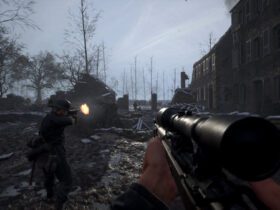What is face recognition?
Facial recognition is a technology that automatically identifies (recognises who is in the photo) or verifies (confirms that the person in the photo is that person) a person in a photo, video or in person. Neural networks are used for recognition, which can read and analyse the unique features of a person’s face and then check them against the database.
Such technologies are beginning to be used everywhere and even online casinos, about which you can read online casinos reviews.
How facial recognition technology has evolved
The first experiments in machine facial recognition were conducted in the 1960s by Woody Bledsoe, an artificial intelligence researcher at the University of Texas at Austin. His working group created a database of 800 pictures of people in different angles. The scientists then marked the faces with 46 coordinate points, using a prototype of a modern tablet. Using a special algorithm, the system deployed the faces at different angles, zooming in and out. In the second stage, the algorithm used 22 measurements, acting on Bayesian decision theory – so that the overall conclusion was as accurate as possible. In the end, the system developed by Bledsoe coped 100 times faster than a human.
- In 1988, Michael Kirby and Lawrence Sirovic of Brown University applied the Eigenface approach using linear algebra to analyse images. They applied less than 100 different values to mark up faces.
- In 1991, Alex Pentland and Matthew Turk from MIT improved the Eigenfaces technique by incorporating environmental factors. They succeeded in automating the recognition process.
- In the late 1990s, the US Defense Advanced Research Projects Agency (DAPRA) and the National Institute of Standards and Technology released FERET, the most extensive database of faces – over 14,000 images. It was originally used to find and identify criminals around the world, but was subsequently made available to the public.
- In 2010, Facebook began using facial recognition to find users in published photos and offer to tag them.
- In 2011, authorities in Panama and the US launched a joint project called FaceFirst. It is a facial recognition technology that was used to disrupt illegal activity at Tocumen Airport in Panama. In the same year, police and US intelligence agencies began using facial recognition to identify dead bodies – including Osama bin Laden.
- Since 2014, facial recognition has been used in mobile phone cameras and, since 2017, in retail.
How does facial recognition work?
The technology is based on two neural networks:
- The first is an aligner network. The software cuts out detected faces (those that are tightly spaced, turned in profile or just very small and fuzzy, the system may not recognise). It then aligns them: it detects points of the eyes, nose and mouth on the face. Finally, it rotates and adjusts the size of the photo so that the eye, nose and mouth points are in specific places.
- The second is a “recognizer” network. It inputs an aligned image, fed by the first neural network, and outputs a facial vector – a set of numbers of a fixed length. These vectors may differ in different networks, but most often they are some degree of two. The network outputs similar vectors for similar faces and vice versa.
Huge databases of people’s faces are used to train neural networks. The neural network input tells it who the face belongs to, and then it is trained to give the most accurate results. After learning from millions of different people, the neural network begins to recognise new faces – ones that were not in the database.
Where is facial recognition being used?
- Security
Criminals, police and intelligence agencies use automated biometric identification systems (ABIS) to find criminals, prove crimes and prevent them – such as terrorist attacks or document fraud.
Facial recognition cameras are used for security at public events, for security checks at airports, and for access control at various organisations. The systems help find missing children, disoriented adults or people being held captive.
- Healthcare and medicine
Facial recognition in hospitals and nursing homes helps track whether patients are taking their medication and monitor their condition through a special monitor. Neural networks are even able to detect genetic diseases by facial characteristics – such as DiGeorgey syndrome – and assess the overall condition of the patient.
- Retail, catering and banking
Facial recognition technology helps identify customers and prevent fraud during in-store purchases, analyse customer behaviour and optimise service so that it sells more.
Online biometrics can be used to open an account and obtain credit, as well as to withdraw money from an ATM. For example, China’s KFC and America’s Amazon Go have “pay by the face”. In Russia, there are plans to introduce biometrics at all major banks instead of regular identification.
- Education
Services based on facial recognition help during online learning: they make sure that students do not get distracted during exams, do not cheat and do not use verbal cues.













Leave a Reply